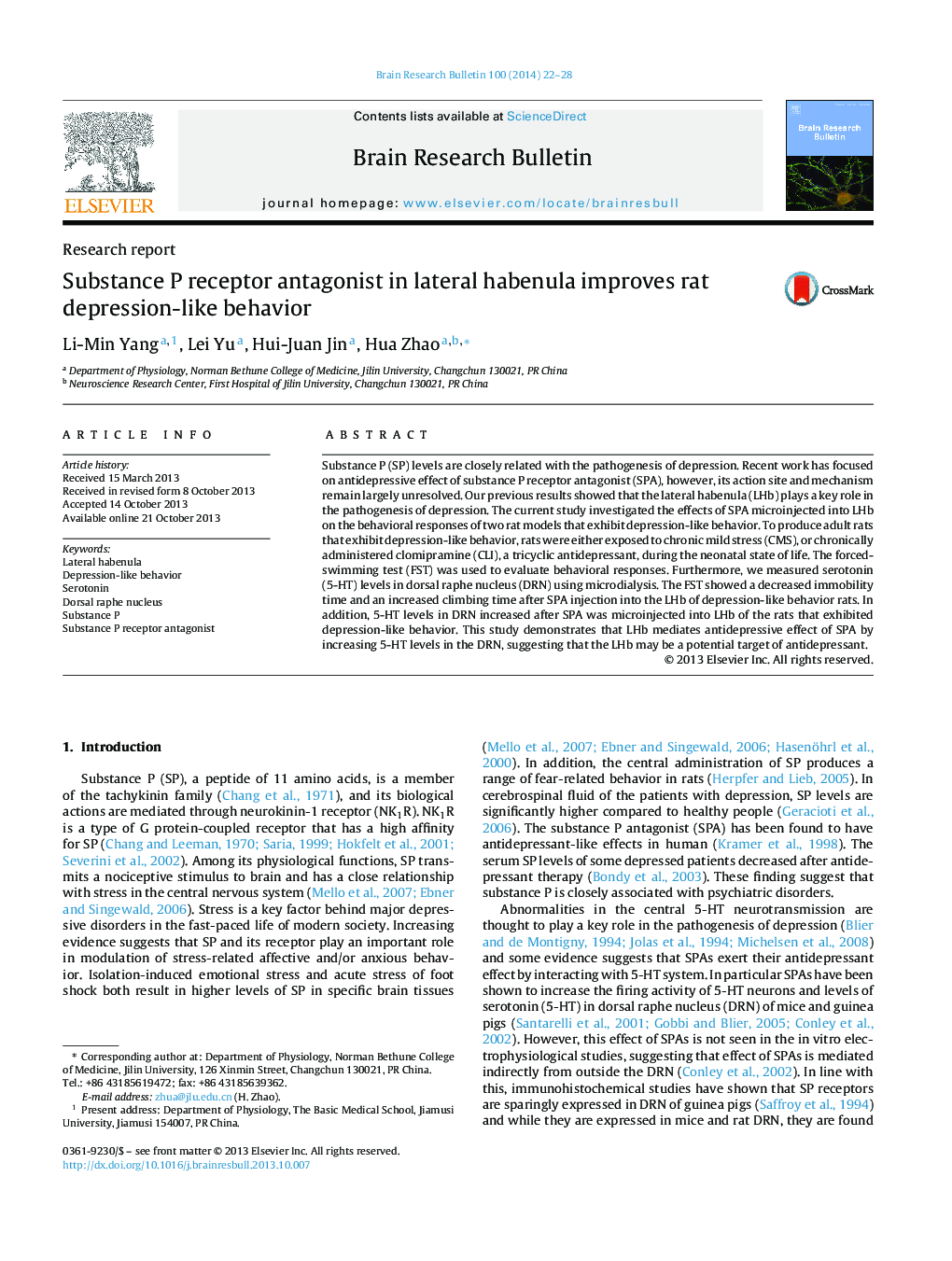| Article ID | Journal | Published Year | Pages | File Type |
|---|---|---|---|---|
| 4318847 | Brain Research Bulletin | 2014 | 7 Pages |
•We examined the effects of SPA in LHb on the rat depression-like behavior.•SPA microinjected into LHb of depressive rats decreased the immobility time of FST.•SPA microinjected into LHb of depressive rats increased the climbing time of FST.•SPA microinjected into LHb of depressive rats increased the 5-HT levels in DRN.•SPA in LHb improves rat depression-like behavior via increasing 5-HT levels in DRN.
Substance P (SP) levels are closely related with the pathogenesis of depression. Recent work has focused on antidepressive effect of substance P receptor antagonist (SPA), however, its action site and mechanism remain largely unresolved. Our previous results showed that the lateral habenula (LHb) plays a key role in the pathogenesis of depression. The current study investigated the effects of SPA microinjected into LHb on the behavioral responses of two rat models that exhibit depression-like behavior. To produce adult rats that exhibit depression-like behavior, rats were either exposed to chronic mild stress (CMS), or chronically administered clomipramine (CLI), a tricyclic antidepressant, during the neonatal state of life. The forced-swimming test (FST) was used to evaluate behavioral responses. Furthermore, we measured serotonin (5-HT) levels in dorsal raphe nucleus (DRN) using microdialysis. The FST showed a decreased immobility time and an increased climbing time after SPA injection into the LHb of depression-like behavior rats. In addition, 5-HT levels in DRN increased after SPA was microinjected into LHb of the rats that exhibited depression-like behavior. This study demonstrates that LHb mediates antidepressive effect of SPA by increasing 5-HT levels in the DRN, suggesting that the LHb may be a potential target of antidepressant.
